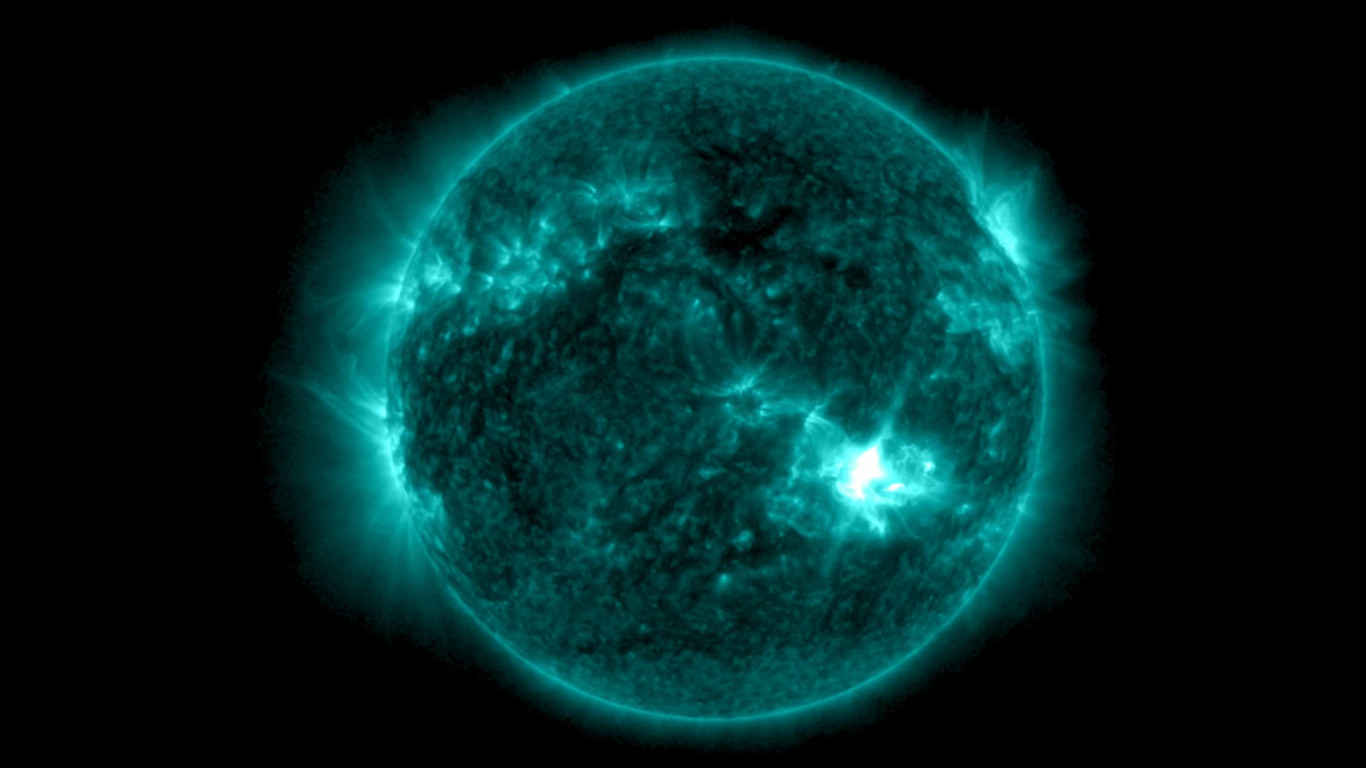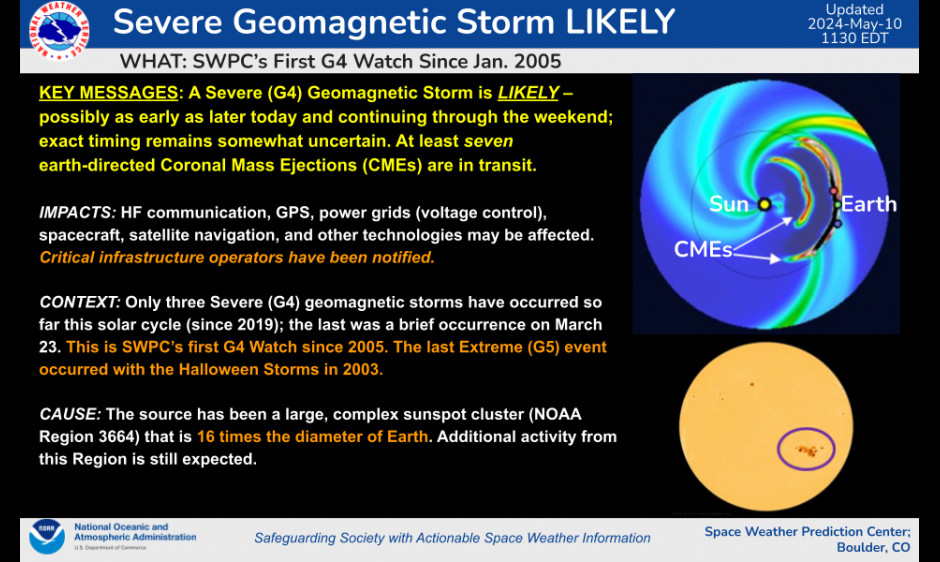(BIVN) – The planet Earth is under a Severe (G4) Geomagnetic Storm Watch, issued by the NOAA Space Weather Prediction Center on Thursday, May 9, following several earth-directed coronal mass ejections (CMEs) that were seen erupting from the Sun.
This is the first Severe (G4) Geomagnetic Storm Watch to be issued since January 2005.
NOAA says the storm is expected to arrive as early as midday Friday, May 10, 2024, and persist through Sunday, May 12, 2024. “Several strong flares have been observed over the past few days and were associated with a large and magnetically complex sunspot cluster (NOAA region 3664), which is 16 times the diameter of Earth,” NOAA wrote.
Under a G4 Geomagnetic Storm Watch:
- Power systems: Possible widespread voltage control problems and some protective systems will mistakenly trip out key assets from the grid.
- Spacecraft operations: May experience surface charging and tracking problems, corrections may be needed for orientation problems.
- Other systems: Induced pipeline currents affect preventive measures, HF radio propagation sporadic, satellite navigation degraded for hours, low-frequency radio navigation disrupted, and aurora has been seen as low as Alabama and northern California (typically 45° geomagnetic lat.).
From a NOAA news alert:
NOAA’s Space Weather Prediction Center (SWPC) — a division of the National Weather Service — is monitoring the sun following a series of solar flares and coronal mass ejections (CMEs) that began on May 8. Space weather forecasters have issued a Severe (G4) Geomagnetic Storm Watch for the evening of Friday, May 10. Additional solar eruptions could cause geomagnetic storm conditions to persist through the weekend.
A large sunspot cluster has produced several moderate to strong solar flares since Wednesday at 5:00 am ET. At least five flares were associated with CMEs that appear to be Earth-directed. SWPC forecasters will monitor NOAA and NASA’s space assets for the onset of a geomagnetic storm.
CMEs are explosions of plasma and magnetic fields from the sun’s corona. They cause geomagnetic storms when they are directed at Earth. Geomagnetic storms can impact infrastructure in near-Earth orbit and on Earth’s surface, potentially disrupting communications, the electric power grid, navigation, radio and satellite operations. SWPC has notified the operators of these systems so they can take protective action. Geomagnetic storms can also trigger spectacular displays of aurora on Earth. A severe geomagnetic storm includes the potential for aurora to be seen as far south as Alabama and Northern California.



by Big Island Video News7:19 am
on at
STORY SUMMARY
The NOAA Space Weather Prediction Center issued a Severe (G4) Geomagnetic Storm Watch, the first since January 2005, after several earth-directed coronal mass ejections were observed.